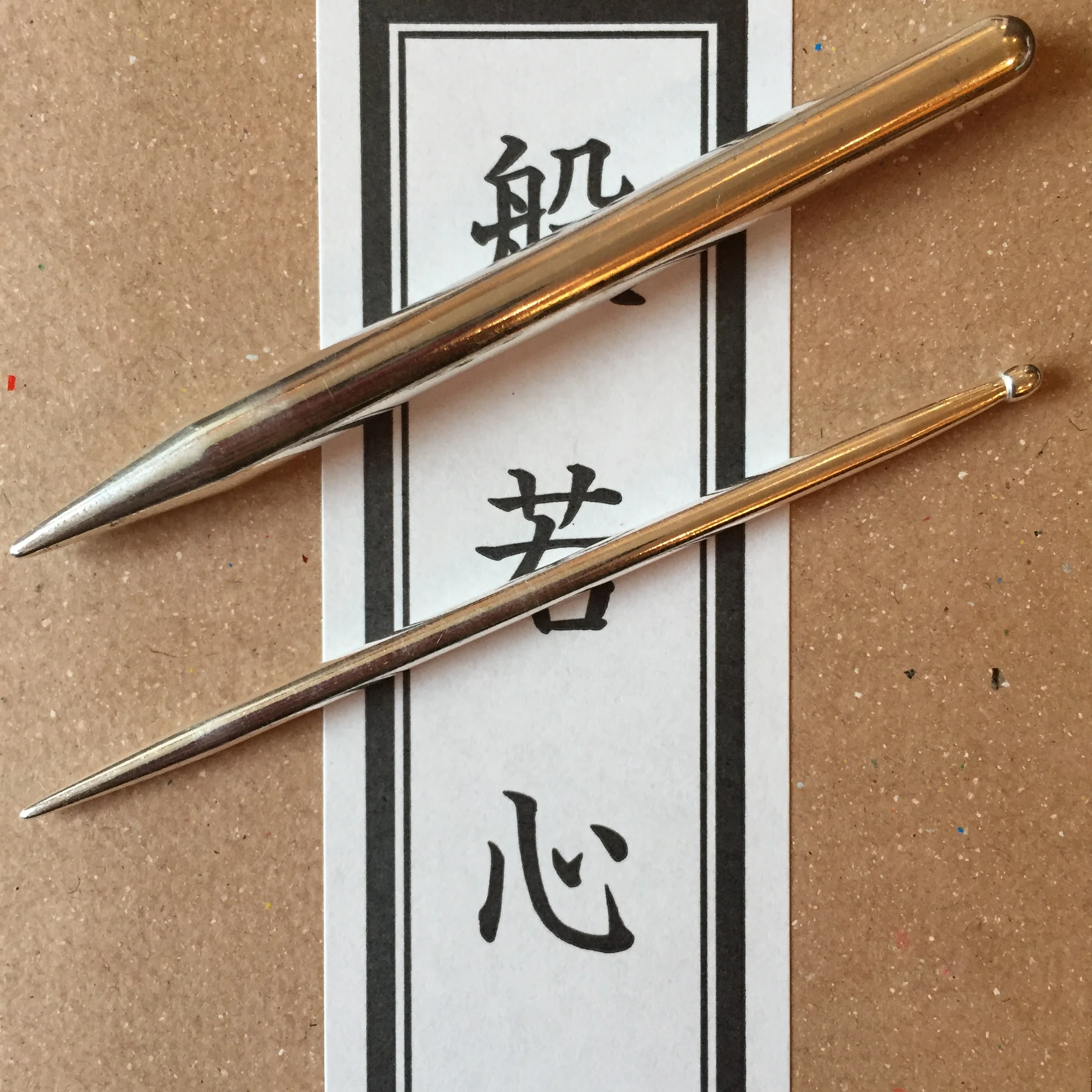The week before Thanksgiving I attended a lecture and demonstration on using contact needles for cancer treatment related pain by Dr. Keiko Ogawa of Kanazawa, Japan. Dr. Ogawa published a study in 2013 on using contact needles to treat chemotherapy-induced peripheral neuropathy (CIPN). I was excited to see research on contact needles available in English and to learn this was the first time she was teaching in the US. There is a wealth of research on contact needle therapy in Japanese, but most of it has not been translated for a Western audience.
My silver contact needle tools (similar in size to golf pencils)
I often use a specialized silver contact needle tool in my treatments. Dr. Ogawa performed her study using disposable silver needles more similar to the stainless steel needles we use for insertion needling. Regardless of the tool, the method is to settle the needle on the relevant acupuncture point rather than inserting the needle into the skin. This is a painless form of treatment that has the added benefit of reducing infection risk, a key feature in treating cancer patients who may have weakened immune systems due to their cancer and/or their Western treatment (chemotherapy, radiation, etc).
“From ancient times, it has been said that the larger the needle is and the deeper the needle is inserted, the stronger the stimulation will be. If the stimulation is too strong, the patients’ condition becomes worse, especially when their constitution is weak. CNT is known as a method of weak stimulation. In this aspect, CNT is effective and appropriate for treating cancer patients.”
CIPN often prevents patients from continuing valuable anti-cancer treatment and can make daily activity difficult or impossible. As the hands and feet are often the most affected, this can mean inability or difficulty walking or doing daily self maintenance and household activity, much less working or caring for others.
Dr. Ogawa explained and demonstrated a number of specific techniques for us that subtly address the causes of pain and weakness for a variety of patient types. I can now use these methods in a manner specific to an individual patient. Treatments consist of 15-20 minutes for the front and 15-20 minutes for the back. Based on patient strength, we may either combine front and back treatments or do only one side per week. There is a set of points and treatment methods we'll use in every treatment and another set I'll choose among based on how you are doing during that particular visit.
I love that this approach highlights the key approach of Japanese acupuncture: to do as little to the body as possible to assist it in bringing itself back to balance. Your body is always trying to regulate itself and my methods are meant to help that process, not to do all the work and tire you out or make you reliant on treatment to feel well.
Though this study has a very small number of patients, it has promising results to be explored with a larger sample size, making it a successful pilot study. Both improved movement ability and a decrease in breakthrough pain (in other words the sudden sharp sensation of pain or shock) can improve quality of life to a strong enough degree that contact needle therapy using these methods is something I am happy to offer to my patients.
Read the full study "Efficacy of Contact Needle Therapy for Chemotherapy-Induced Peripheral Neuropathy" by Keiko Ogawa et al. in Evidence-Based Complementary and Alternative Medicine Volume 2013, Article ID 928129
ABOUT SHAWNA
Shawna Seth, L.Ac. is a California state licensed and nationally certified acupuncturist currently pursuing physician assistant training. To better understand acupuncture and how you can use it in your daily life, and to explore the connections between Western and Eastern medicine, follow her blog A Cuppa Qi. She also invites connection via email contact@shawnaseth.com or Instagram @acuppaqi.
